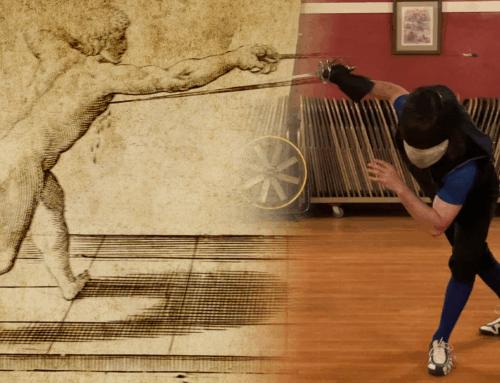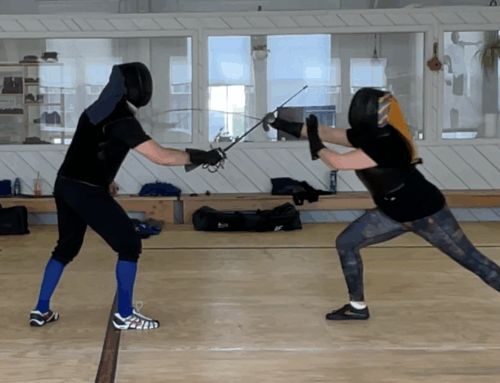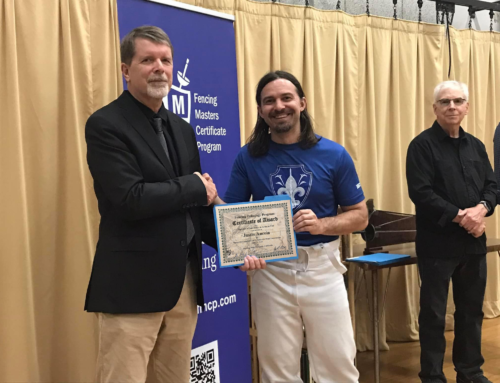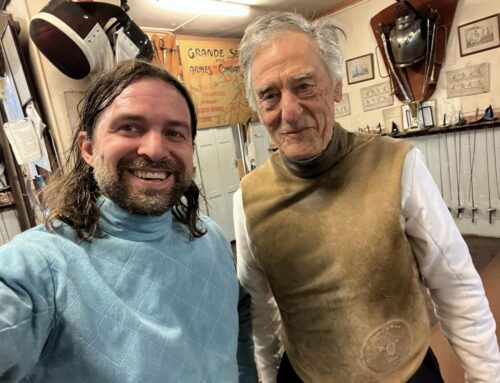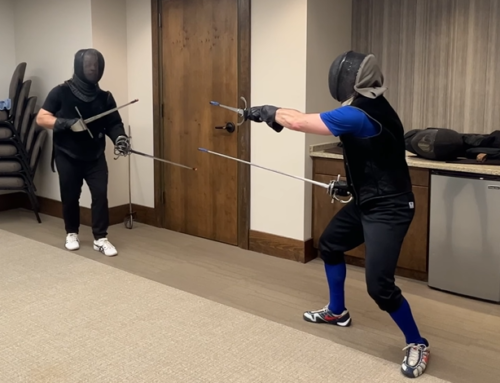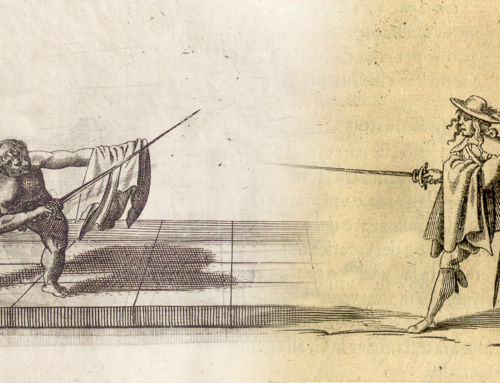So a couple of month’s back, I did a presentation on two translations of Chapter VIII of Alfieri’s La Scherma and then posted my notes/thoughts in a blog post here.
The Tl;dr version is it seemed like the Leoni translation was waaaay off course compared to the Terminiello translation. Or, if the Leoni version was right, Alfieri seemed to have some interesting ideas about how fencing works.
I posted the blog to social and it resulted in some interesting dialogue on Facebook, including getting some new perspectives on the translation as well as its martial interpretation.
While I interpreted the plays as starting off on the high-inside line (in the Piermarco Terminiello translation the wounder starts off in quarta but in the Tom Leoni version the opponent starts off in quarta), that may not exactly be the case — at least in in the Leoni version.
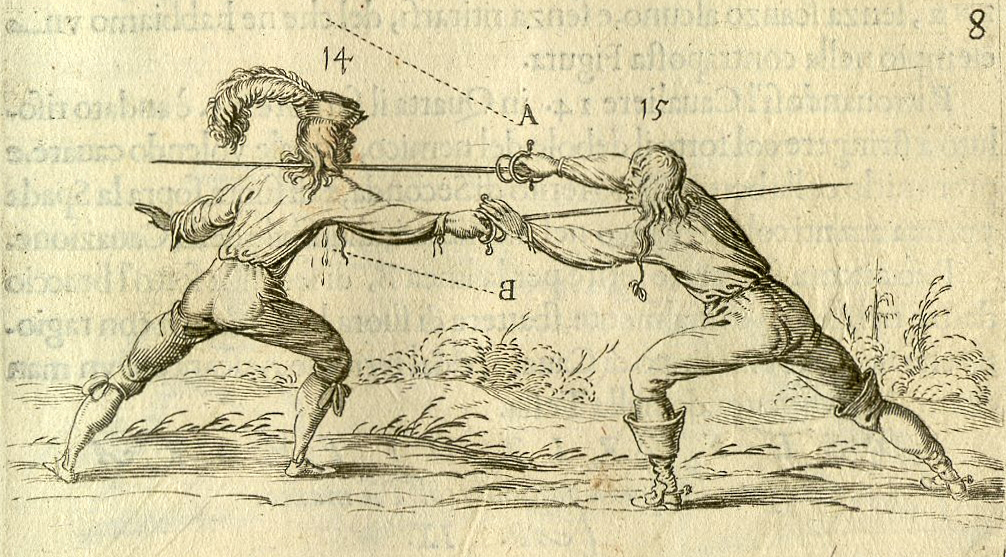
Darren Di Battista, author of On Historical Fencing with the Rapier and Dagger, thinks that since the opponent is in quarta in the Leoni version, the wounder must start off in seconda:
I think the opponent is in quarta and you find them on the outside in seconda. They attempt to cavazione, and you strike in seconda during the tempo of the cavazione.
–Darren Di Battista
Or, you feint under their sword with a half-cavazione, they extend a thrust, you beat it aside (on the outside) and step in past its point to cut.
Quarta is the only guard Alfieri explicitly states one of the fencers beings in, leaving the other fencer’s starting guard a bit of a mystery. Di Battista came to his conclusion via some reverse engineering of the play. He added:
The clues I see are in the first part where the translations are similar:
– The opponent is in quarta.
– You find the opponent’s sword.
– The opponent attempts to defeat you with a cavazione.
– You pass in seconda during the tempo of the cavazione, *but without making a cavazione of your own*.That means you must have been in seconda to begin with.
If you had found on the inside, you would also be in quarta (or mista) and the timing of a pass coupled with a turning from quarta to seconda should throw your debole onto their forte. Even if that’s not the case, I think it *has* to end in a neutral position here *at best* for you.
–Darren Di Battista
The divergences in translations of Chapter VIII of La Scherma definitely have it’s impact in martial interpretation. While Di Battista worked mostly off the Leoni translation for his interpretation, modern practitioners working off of the Terminiello version could come to much different conclusions about how the play works and the underlying theories of Alfieri’s system.
Such as is the case with The Kron Rapier Study Group out in LA who shot video of their interpretation of the chapter.
Although both translations and interpretations of the play differ, they both work if done in the right tempo (something Alfieri doesn’t explicitly call out in the chapter’s text).
Based on the two interpretations, here’s how the plays script out:
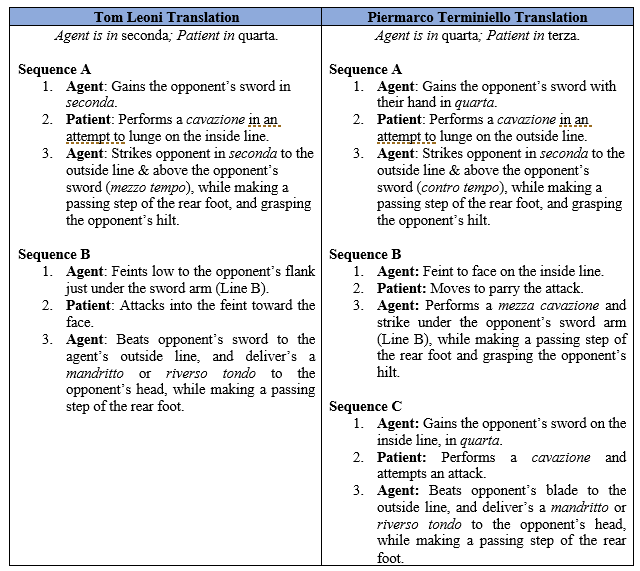
It’s fascinating to see how translation choices affect martial interpretation and is the topic of a larger paper I’m working on. Stay tuned.
Sources:
Alfieri, Francesco Ferdinando. La Scherma: The Art of Fencing. Padua, 1640. Translated and edited by Caroline Stewart, Phil Marshall, and Piermarco Terminiello. Fox Spirit Books, 2017.
Alfieri, Francesco Ferdinando. La Scherma: on Fencing, 1640 Rapier Treatise. Padua, 1640. Translated and edited by Tom Leoni. Self-published: Lulu, 2018.
Alfieri, Francesco Ferdinando. “DEL FERIR L’INIMICO DI FUORA sopra la Spada passando col Piè manco. CAP. VIII”, “COME SI DEBBA FERIR L’INIMICO, che tenti di vantaggiarsi in giro. CAP. XIII.”, “DEL FERIR DI PASSATA COL PIE MANCO. CAP. XXXI.” La Scherma. Padua, 1640. Transcription by Andrea Conti. Accessed September 15, 2019. https://wiktenauer.com/wiki/Francesco_Fernando_Alfieri#Second_Part
Justin Aucoin’s Facebook Page. Accessed January 14, 2020. https://www.facebook.com/JustinAucoin/posts/10101354396495491
Kron Martial Arts, “La Scherma by Alfieri: Plate 8, Presented by The Kron Rapier Study Group.” November 16, 2013. Video, 4:27. https://youtu.be/JmPnR0QlalE



